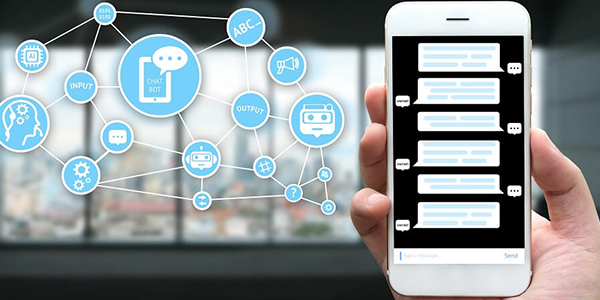
Imagine you want to buy a product from your favorite brand or an online store. Everything you do now as a customer is go to the website or call to the call center hoping to get what you’re looking for on the website. Once you’re done shopping with your favorite brand, to a huge embarrassment, you’ll find your inbox overwhelmed with messages or notifications from the brand every day. That could most of the time annoy us by the way the company treats their customers assuming they’ve got the permission to send notifications on a regular basis. Rather than having you to go through the entire website searching for what you need, let say you have a program designed from the organization in such a way that you interact with it on a one-one basis. Think of interacting with the brand or organization just as you might have a text message conversation with a friend who responds to your texts and your inputs in a human-like conversation. Wouldn’t that enrich your ability to immerse yourself in the brand saving your time simultaneously guaranteeing your customer satisfaction? This concept of chatting with bots has gained significance over the recent years with many companies investing into it to deliver the best customer experience.
Chatbots are becoming more mainstream especially in customer service and support. The advances in technology and new business models have paved the way for bots empowering small businesses, large brands and any scale organizations to replace their customer service with chatbots and AI. Chatbots simulate a real human-like experience and interact with the customers without the need for any human being to manage the conversations in a real time. The so-called chatbot technology works through advanced natural learning processing and improved machine learning algorithms. Chatbots are the future of customer-based firms and here’s the reason why. Chatbots make the communication with your brand as simple and as easy as sending a one-to-one text message. You can even send notifications about new products, offers, shipping alerts, etc. in the same way rather than spam your customer’s inbox. Unlike human customer service and support representatives, chatbots don’t have the physical and mental inconsistencies that can degrade service levels.
We have Siri, Alexa applications powered by artificial intelligence, helping its users by understanding their complex requests, personalizing responses, and interacting with them. Facebook also makes use of Natural Language Processing technology to work chatbots into its user experience. By now, it is known that in using such applications there’s a much lower tolerance for machines to make mistakes. According to a recent survey by Gartner, it was predicted that about twenty-five percent of customer service and support operations will integrate virtual customer assistant (VCA) or chatbot technology across engagement channels by 2020. Gartner’s findings revealed that over half of organizations have already invested in virtual customer assistants for customer service and the result was that post implementation of VCA, organizations had managed to reduce the number of calls, chat or email inquiries by 70%. Apart from that, it was also reported that the implementation of the technology has even brought increased customer satisfaction and saving 33% per voice engagement.
Besides providing a scalable way to interact one-on-one with buyers, chatbots keep the conversation natural and intuitive with people you want to reach in the way that’s most comfortable to them. This has what mustered the retailers, organizations and online stores to implement VCA that takes up a majority of their human customer service representatives’ time promising great customer satisfaction. Chatbots and AI are increasingly helping businesses, organizations and marketers automate their interactions with consumers and customers in a more user-friendly environment.
